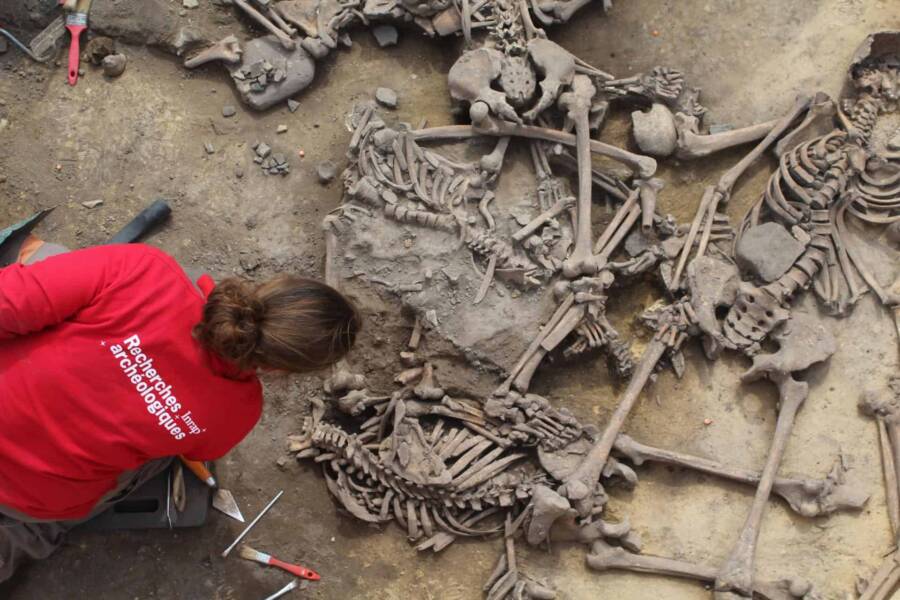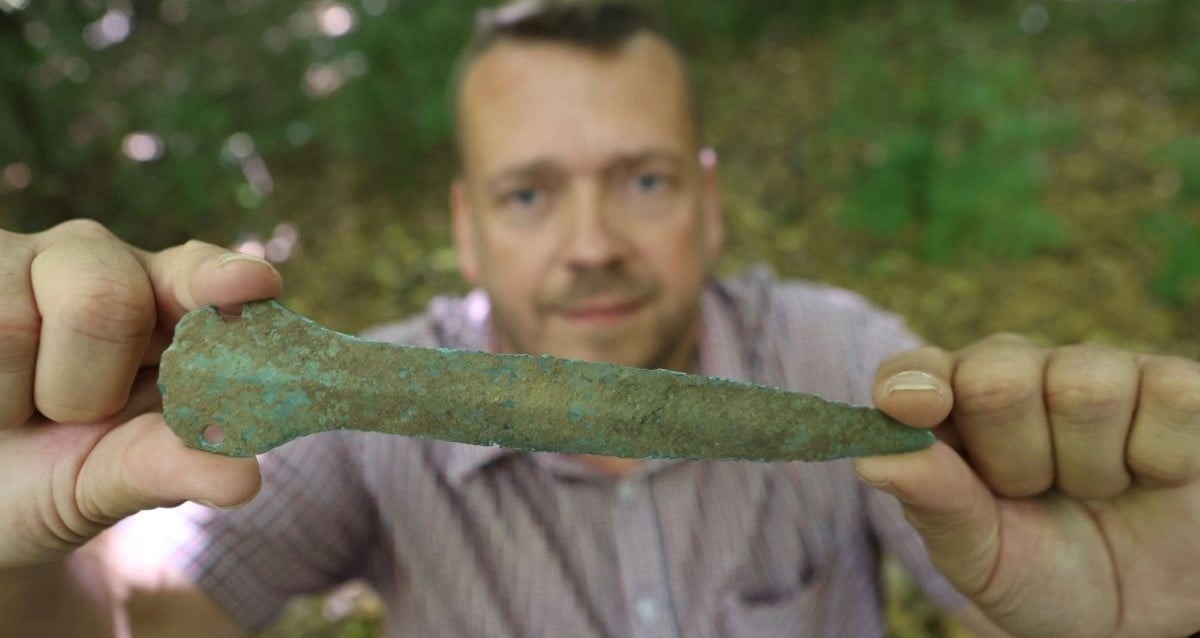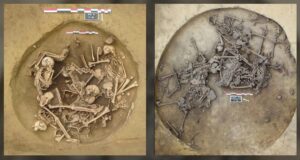Unveiled: Chilling Stone Age ‘Victory Pits’ in France Reveal Brutal Massacre Secrets
The results were unmistakable. The victims weren’t local to the region. Their diets likely included different protein sources, and the isotope analyses also suggested they grew up in diverse landscapes and moved around a lot more. In short, they were outsiders moving in on a new territory.
A Public Theater Of Violence In Stone Age France

INRAPArchaeologists excavating one of the burial sites at the Stone Age pits.
Even within the victim group, there were some differences that emerged during the isotope analyses that suggested there could have been more than one group of invaders attacking the group that was local to the region. If that’s true, both invading groups were defeated by the local defenders — and then buried together.
One theory is that the arms may have been cut from fallen enemies on the battlefield and paraded as trophies, while the fuller skeletons could represent captives who were taken alive, tortured, and then executed in settlement centers. Alternatively, the severed limbs may have been the result of mutilations intended to cripple and humiliate captives.
“In this scenario, all victims would have been brought alive to the site as captives from different locations and then treated (or punished) differently for unknown reasons (e.g., their origins). Survivors of such mutilations (if any) may have been retained as slaves or even adopted, perhaps by families who lost many members during conflict,” researchers wrote.
Notably, the researchers argue these practices could have been carefully staged events, rather than spontaneous acts of cruelty. Killing and dismemberment likely took place in public, serving as a gruesome way to reinforce group identity and celebrate victory.














Post Comment